HurryTheFoodUp is reader-powered. If you click through using links on our site we may earn a small commission at no cost to you.
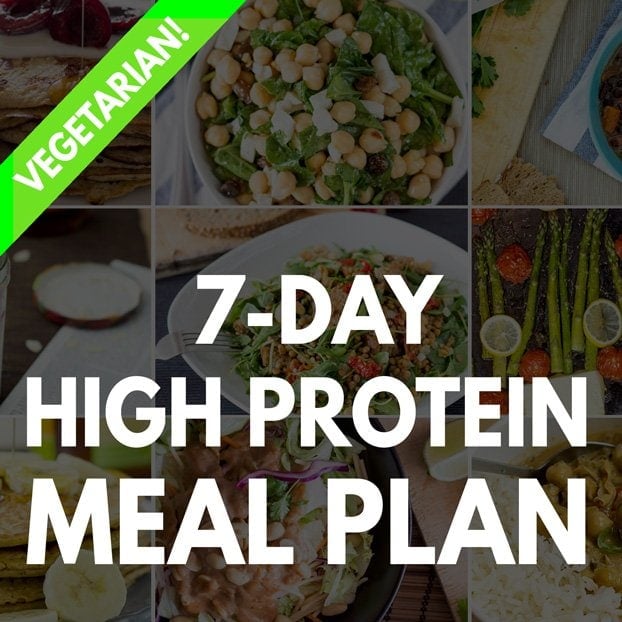
Ready to take your progress to the next level? Welcome to the only high-protein vegetarian meal plans you’ll ever need.
Subscribe to get our FREE 7-Day Vegetarian High Protein Meal Plans
Protein intake is always going to be a concern when you’re vegetarian – following a high protein diet requires a bit more effort once meat and fish are out the window!
However, it is 100% achievable and I’m here to show you how you can eat a balanced diet with high levels of complete proteins that are totally veggie.
Eating enough protein is important for everyone, however these meal plans focus on extra high protein diets for the specific purposes of muscle gain or weight loss.
The diet required for muscle gain is different to the diet required for weight loss, so we have two separate protein diet plans, one for each goal.
Depending on your goal, you can skip forward to our muscle gain high protein meal plan or our weight loss high protein meal plan.
How to download our high protein meal plans
Want to get started? Simply sign up in the box above or visit this page to get your free copy of the high protein meal plan.
From there I’ll send you an email with a choice of meal plans. Simply pick weight loss or muscle-building and I’ll do the rest. So keep an eye on your inbox and get ready to enjoy a week of tasty meals!
What do our high protein meal plans look like?
Our high protein meal plans cover 7 days of eating, including breakfast, lunch, dinner and snack options.
There is a meal plan for weight loss and a meal plan for muscle gain.
They are designed to provide you with all your nutritional requirements to meet your strength or weight loss goals and have a balanced diet.
The meal plans are designed to be easy to put into practice: they contain helpful grocery lists for your weekly shop, all lunch recipes are easily transportable and all the dinner recipes are quick to prepare for busy weeknights!
High protein meal plan for weight loss
If weight loss is your goal, our high protein meal plan for weight loss is a great place to start. We know the best foods to eat for weight loss and all the foods to avoid when losing weight.
You might be wondering what role protein plays in weight loss. To put it shortly: an important one!
Protein is a very important macro for general health and wellbeing, but it is also the most filling macro.
Eating meals that contain a lot of protein will keep you full for longer and therefore make you less likely to snack on empty calories between meals.
Furthermore, eating protein helps to maintain muscle mass which also helps you lose weight because muscle burns more calories than fat.
How much protein do I need to eat for weight loss?
The bare minimum someone needs to stop protein deficiency is accepted as 0.8g per kilogram of bodyweight (or 0.36g per pound).
To demonstrate, we’ll use a bodyweight of 60kg¹ (132 lbs), as the weight of an average woman when any extra fat is discounted.
60 x 0.8 = 48.
That’s an absolute minimum of 48g protein to stop protein deficiency and stop any negative effects from a lack of protein.
Excess fat does not require extra protein and as such is not included in the calculations.
Anything above 48 grams helps to skew weight loss in a positive way because you will proportionately lose more fat compared to muscle.
If you can get up to 60g a day, you are doing great!
It can be tricky as a vegetarian however – with no source of animal protein like lean meat or fish.
It’s especially tricky to get there at only 1500 calories, which is how many calories an average active female might need to be in a calorie deficit and lose weight.
We have designed meals around the most calorie-efficient vegetarian sources of protein.
Our high protein diet for weight loss goes up to 95 a day!
Remember every gram above 48g protein works in your favor. With this much protein in a healthy diet you are skewing successful weight loss massively in your favor.
What will I be eating in a day?
This is Day 1 of our high protein weight loss meal plan, just to give you an idea of what following our high protein diet looks like.

Main meals:
Breakfast: Veggie Baked Beans (355 kcal, 20g protein)
Lunch: Cottage Cheese Pancakes (419 kcal, 29g protein)
Dinner: Mushroom Stew with Coconut (464 kcal, 20g protein)
Snacks:
Protein Shake (120kcal, 23g protein)
Fruit of Choice (100kcal, 1g protein)
Daily total:
Main Meals: 1238 kcal, 69g protein
Snacks: 220 kcal, 24g protein
= 1458 kcal, 93g protein
Sounds good, right? Download it here!
High protein meal plan for muscle gain
If strength training is your thing and you’re looking to bulk up, you’ll want to try our high protein meal plan for muscle gain.
Protein is so important for building muscle. It is one of the fundamental building blocks of muscle, so you literally need it in order for your body to generate muscle tissue.
If you are doing lots of muscle building exercises, it is vital that you also consume plenty of protein as it will help to repair and build your muscles, making those exercises effective.
If you don’t consume enough protein when trying to build muscle, you’ll probably fall short of your expectations and struggle to recover properly.
How much protein for muscle growth?
We always make sure you’ll get a minimum of 75g, 95g and 115g, depending if you skip or munch the suggested snacks.
Our plans also take fat and saturated fat into account to ensure you are getting healthy meals, something we haven’t found in other high protein meal plans available online.
You might think that the protein share in our meal plan is still not high enough.
The bodybuilding world often promotes a 1g protein/lb rule, however the most recent research suggests anywhere between about 0.70g of protein per pound of body weight up to 1g of protein per pound seems to be the sweet spot for building muscle (1.6-2.2g of protein per kg of body weight).
What do I eat in a day for muscle gain?
Here’s a quick run through of a day’s worth of meals and snacks on our high protein meal plan for muscle growth. There are optional snacks which you can add or skip depending on the calories/protein you need to consume.

Main meals:
Breakfast: Banana Egg Pancakes (504 kcal, 28g protein)
Lunch: Bulgur Kidney Bean Salad (649kcal, 23g protein)
Dinner: Easy Broccoli Stir Fry (634 kcal, 29g protein)
Small snacks:
Protein Shake (120kcal, 23g protein)
Nuts and Fruits of Choice (306kcal, 7g protein)
Big snack:
Standard Muesli (521 kcal, 22 g protein)
Daily total:
Main Meals: 1787kcal, 80g protein
Small Snacks: 426kcal, 30g protein
Big Snack: 521 kcal, 22 g protein
So, depending on your calorie needs you can easily adjust the meal plan with the snacks.
Only need around 1800kcal? Stick with the main meals and some light snacks
Need roughly 2200kcal? Go for the main meals and two small snacks (1800 + 400 = 2200kcal)
Is 2700kcal about right for you? Have the main meals and all snacks (1800 + 400 + 500 = 2700kcal)
Easy! Download it here!
Eating high protein as a vegetarian: tips & advice
Now that you have an idea of what our high protein meal plans are like, let’s dive into some general advice on eating a high protein diet as a vegetarian.
We’ll cover the benefits of a high protein diet and some top tips on making high protein veggie meals.
We’ll also take a quick look at what kinds of protein sources different vegetarian/vegan diets can/can’t consume and share our recommendations for the best vegetarian protein sources.
How much protein do I need?
The RDA, recommended daily allowance, is at a minimum of 0.36g of protein per pound of body weight (0.8g per kg bodyweight).
By percentage that would be roughly 10% of your daily caloric income. Note that that is the minimum requirement for a non-active sedentary person to avoid a protein deficiency, which can lead to serious illness.
For an active person, the amount of protein you need increases according to your activity level and goals.
But in general I can safely say that if you want to build muscle you need more protein than that basic daily recommended allowance.
A higher protein intake is also likely to be beneficial for weight loss, as already mentioned briefly above.
So, if you’re an active person, who does sports regularly, a healthy recommendation would be between 0.75g-1g of protein per lb of bodyweight per day (about 1.6-2.2 grams of protein per kg bodyweight).
By percentage that would be roughly 20-30% of your daily caloric income.
This is based on studies that have investigated the rates of something called muscle protein synthesis (essentially, new muscle being created) and how it differs depending on protein intake.
Benefits of a high protein diet
Eating enough protein is important for baseline nutrition, but eating more protein than the minimum amount has numerous benefits in certain situations.
As mentioned above, protein helps to build muscle. It also helps to prevent muscle loss during weight loss. In fact, it is absolutely vital to up your protein levels when trying to build muscle, because you need enough to repair the damaged tissue and stimulate growth.
Protein also helps to control appetite. Dietary protein suppresses production of the hunger hormone ghrelin, which means it makes you feel full with fewer calories than other macros.
Therefore, a high protein diet can help manage cravings and promote healthy eating, because protein-rich foods are satisfying and won’t leave you wanting to snack on empty calories.
This is all beneficial to weight loss.
There is also some evidence to suggest that higher protein consumption helps to lower your blood pressure and cholesterol.
However, it is important to bear in mind that it is not healthy to just keep upping the protein in your diet indefinitely. This can lead to health problems because you will be lacking in other nutrients. Balance is key, always!
Tips to make high-protein vegetarian meals
The first, most important step in making a high protein vegetarian meal is calculating how much protein you want, choosing where you will get it from and how much you need of that food source to hit your desired protein intake.
I list the best vegetarian protein sources just below.
You will also want to add at least one vegetable or leafy green for a complete meal. If you are trying to lose weight, you’ll want to make this a big part of your dish, because veggies are super fibrous and very low calorie.
For cooking, I would stick to using olive oil or another unsaturated fat, as this is healthier than saturated fats like sunflower oil.
If losing weight is your goal, you can always use a ‘wipe’ method where you add a small amount of oil and wipe it around the pan. An oil spray is another good option.
Oil is highly calorific and it’s easy to go outside of your target calories through excess oil use in cooking.
These are the basic building blocks of a high protein vegetarian meal, around which we have built the exciting recipes in our meal plans.
The secret is often finding sneaky ways to add protein sources to a recipe. For example, a handful of seeds or some cottage cheese in a smoothie, chia in pancakes, cream cheese in your scrambled eggs.
This way your meal is not considerably bulkier, but it contains more of a hit of protein!
Different types of vegetarianism: what can I eat?
The protein sources available to you are very much going to depend on what kind of vegetarian diet you follow. There are a few!
Lacto-vegetarianism excludes meat, fish and eggs but does allow for the consumption of dairy products like milk and cheese.
Ovo-vegetarianism excludes all animal products except eggs. This means that milk, cheese and butter are all off the table, as well as, obviously, meat and fish.
Lacto-ovo-vegetarianism is probably what you are most familiar with; this diet excludes meat and fish but allows for the consumption of all dairy products, including eggs.
Then, of course, there is veganism, which excludes all animal products including all dairy. This poses a different set of challenges when it comes to getting enough protein – something we’ve tackled in our healthy vegan meal plan!
Best sources of vegetarian protein
What protein sources do we include in our high protein meal plans? Let’s have a look at where to find protein for vegetarians.
We’ll specify which kind of vegetarian diet each is appropriate for!
Dairy products – yogurt, cheese, cottage cheese, milk. Suitable for a lacto-vegetarian or lacto-ovo-vegetarian. Stick to low fat versions where possible as this is not the most lean protein and high saturated fat content can make dairy products unhealthy.
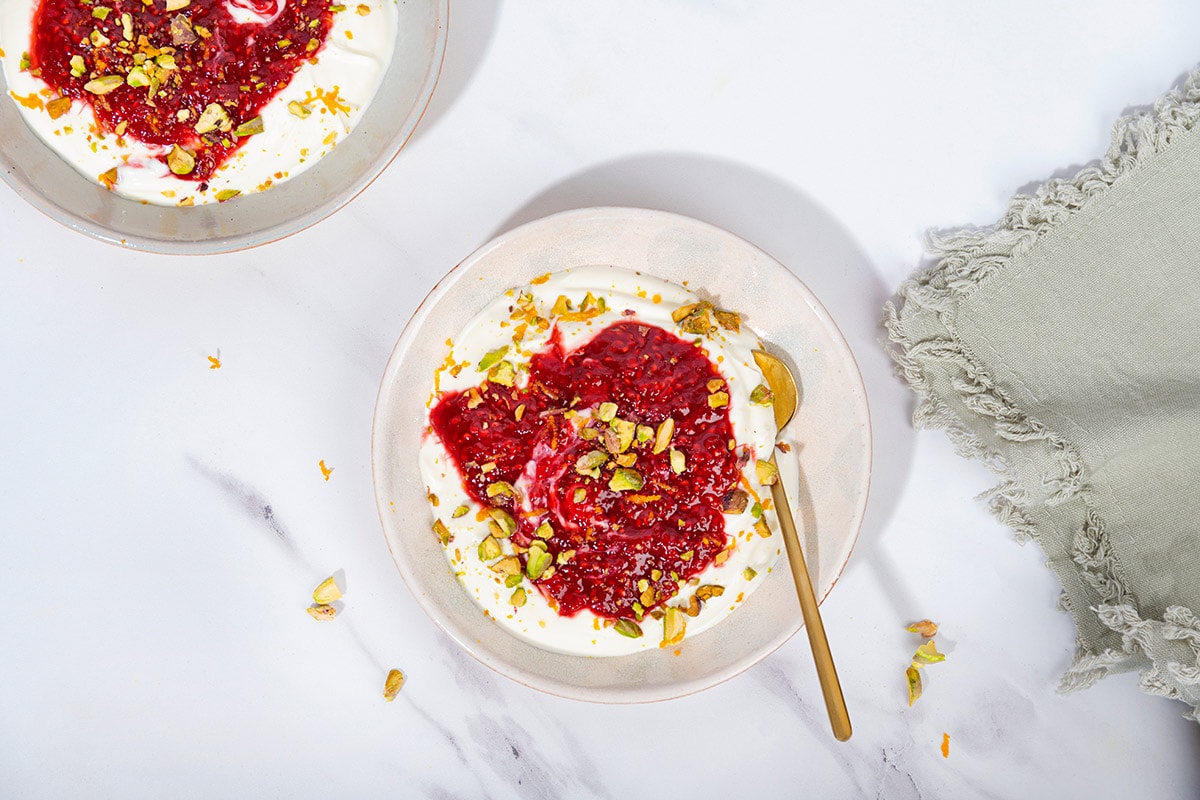
Legumes – beans, lentils, chickpeas, soy products (tofu). Suitable for all diets including vegan. Very high fibre, low fat and nutritious. Legumes do cause flatulence, so proceed with caution!

- ½ cup lentils (or 1 cup cooked lentils eg. tinned)
- 2 cup vegetable broth (divided)
- ½ cup couscous
- 1.5 tbsp olive oil
- 1 green onion (finely chopped)
- 1 clove garlic (minced
- 2 sprigs mint, fresh (chopped)
- 3 sprigs parsley, fresh (chopped)
- 1 tbsp water
- 1 tbsp lemon juice (or 1 tsp white vinegar)
- 1 small tomato (diced)
- ½ medium cucumber (diced)
- Salt and pepper to taste
-
(Skip this step when using canned lentils). In a small pot add the lentils and 1 ½ cup vegetable broth. Once the liquid boils, cover, lower the heat and cook until the lentils are soft.
½ cup lentils, 2 cup vegetable broth
-
Meanwhile, add the couscous into a bowl. Pour in roughly ½ cup of hot vegetable broth until the couscous is just covered. Let sit for 10 minutes.
½ cup couscous
-
In a small bowl add onion, garlic, mint, parsley, water, lemon juice, salt and olive oil. Mix and rest until needed.
1.5 tbsp olive oil, 1 green onion, 1 clove garlic, 2 sprigs mint, fresh, 3 sprigs parsley, fresh, 1 tbsp water, 1 tbsp lemon juice, Salt and pepper to taste
-
Dice the cucumber and tomato and add to the couscous.
1 small tomato, ½ medium cucumber
-
Once cooked, mix in the lentils and dressing. Season with salt and pepper. Add more lemon to taste. Done. Nice!
Nutrition Facts
High Protein Vegetarian Meal Plan – Build Muscle and Tone Up!
Amount per Serving
% Daily Value*
* Percent Daily Values are based on a 2000 calorie diet.
Furthermore, make sure you cook them properly, as undercooked beans contain quite a lot of phytic acid which can prevent your body from absorbing other nutrients.
Grains – bread, pasta, rice, couscous, oats. Mostly good for all vegetarian diets (check bread and pasta for egg/milk). Grains are a great way to bulk out any meal.
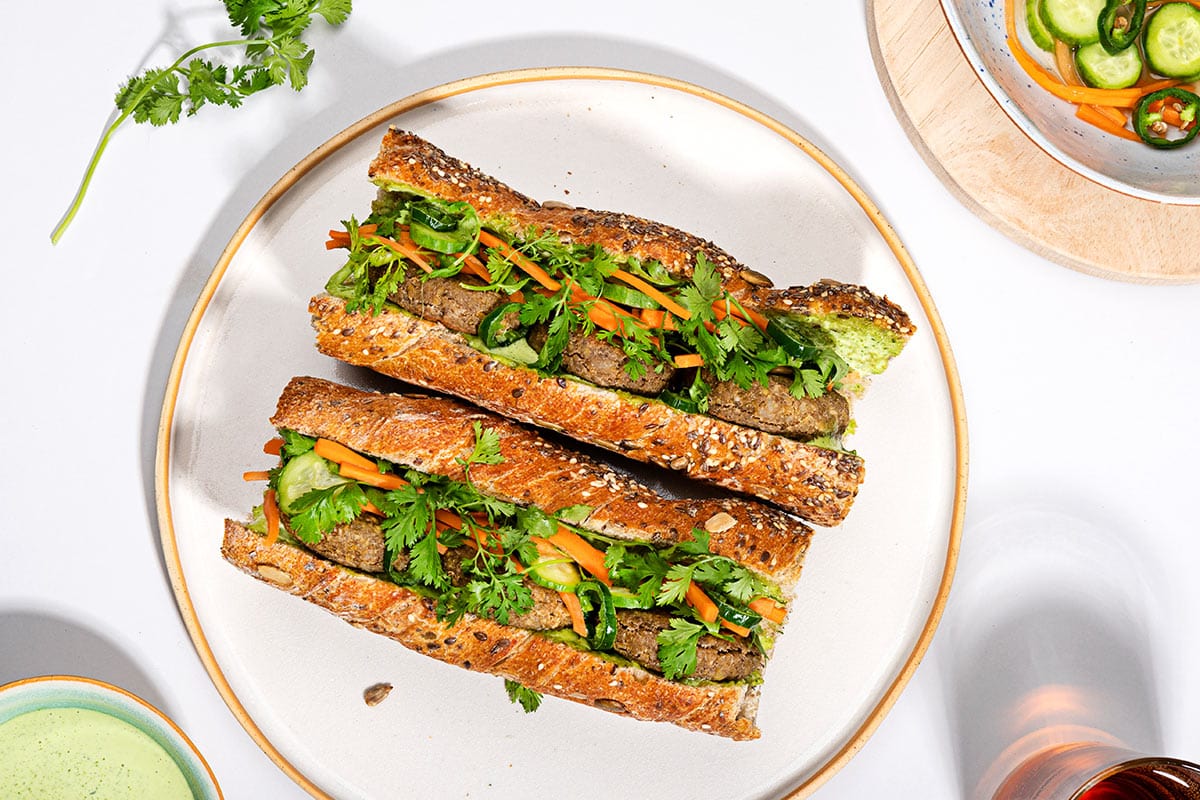
I always recommend whole grains over the more refined white sources. You’ll get a higher amount of protein, fibre and more nutrients, too.
Nuts & seeds – almonds, sunflower seeds, chia seeds, hazelnuts. High in protein, iron and omega-3 fatty acids. Very calorific so best eaten in moderation as a healthy snack, as too much could contribute to going outside of your calorie numbers or even lead to weight gain.
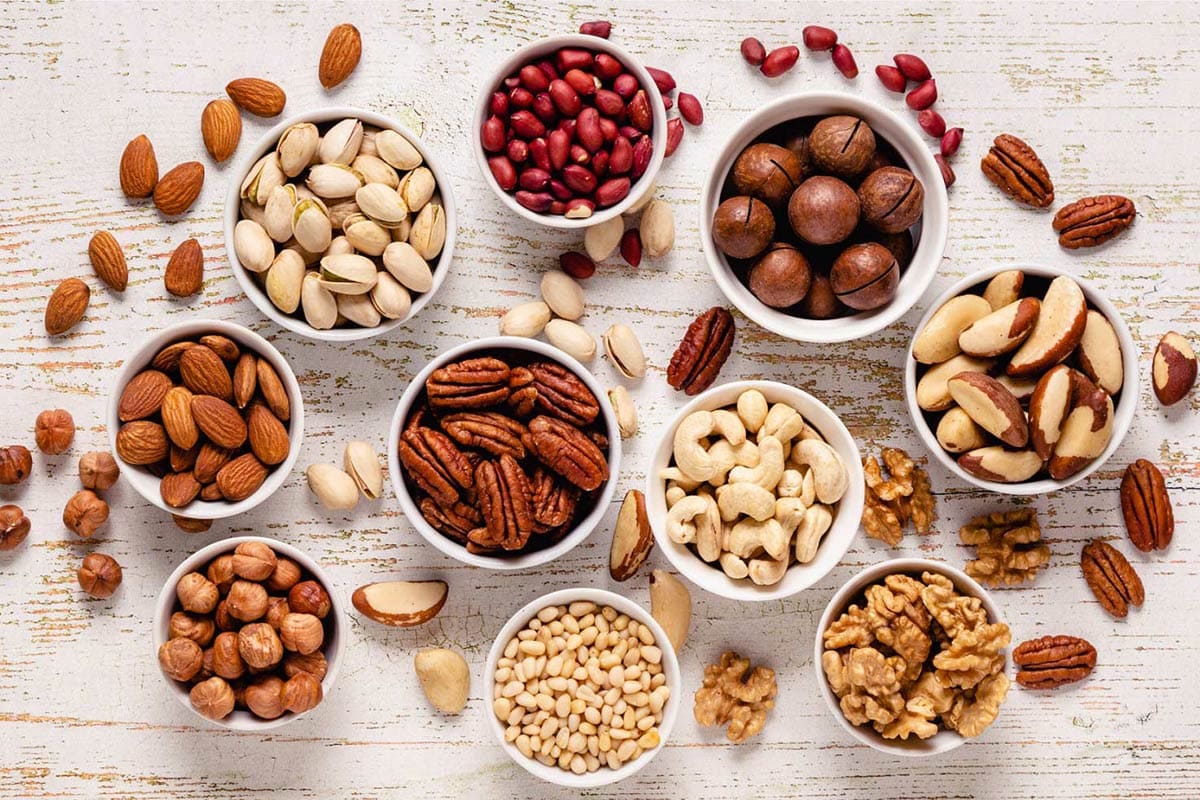
Nut butters fall into the same category – be mindful of how much of these you eat, as it’s easy to consume a lot of calories in one go
Eggs – Eggs are an excellent protein rich food for vegetarians to build muscle. They are super versatile and healthy.
They’re one of those foods which got a bit of a bad reputation over the years but current evidence doesn’t seem to support that view.
Eggs can be eaten as part of a lacto-ovo-vegetarian and ovo-vegetarian diet.
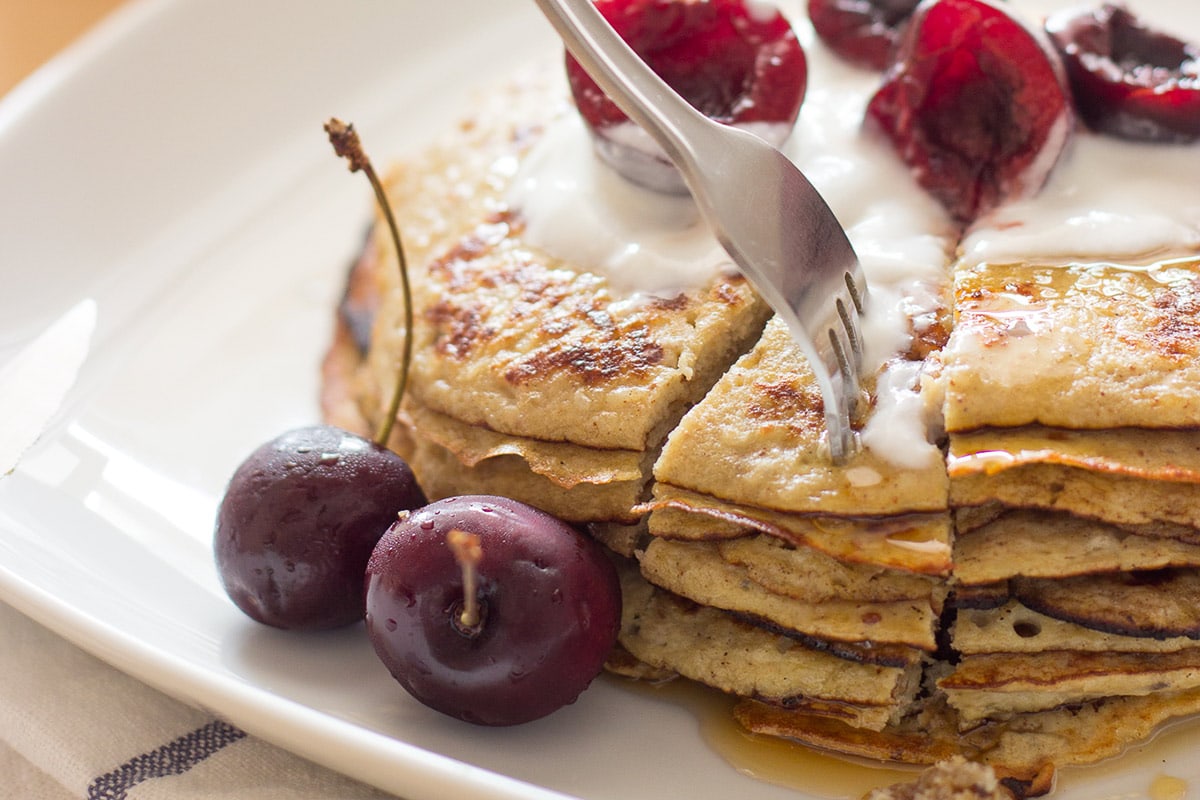
Meat alternatives – quorn, tempeh, seitan. Worth checking the label on these to find out how much protein they actually contain. In general, these can be great additions to a vegetarian diet
Many meat alternatives are made from soy products so will contain a fair amount of protein. I tend to keep processed meat alternatives to a minimum because they are expensive and often full of artificial ingredients or unnecessarily high levels of salt and sugar.
Find more vegetarian high protein foods here!
The bottom line
Eating a high protein diet as a vegetarian is great if you are trying to lose weight or gain muscle.
As part of balanced meals, protein will help keep you fuelled and strong while you try and reach your goals.
By following our high protein meal plan, you can discover lots of delicious vegetarian recipes that make it easy to eat all the protein you need!
Of course, the meal plan is only 7 days – if you want more, we have loads of high protein recipes on our website, or you could sign up to our weekly high protein vegetarian meal plans!
Quick-fire FAQs
Make protein the center of any meal you eat if you want to get 120g protein a day as a vegetarian.
Make sure you are still eating carbs and fresh veggies so that your diet is balanced, but ensure a good quality protein source with every main meal.
You can also top up throughout the day by eating high protein snacks, and you can see our favourite high protein snacks here, like protein bars and shakes as snacks.
Tempeh is one of the vegetarian foods which is highest in protein. It contains 20g of protein per 100g.
Soy and eggs are also both fantastic sources of protein for vegetarians.
Eggs, milk and cheese are all full proteins for vegetarians. If you’re concerned about lack of nutrients like Vitamin B12 then you can consider supplementing it through fortified milks or a vitamin tablet.
Subscribe to get our FREE 7-Day Vegetarian High Protein Meal Plan


